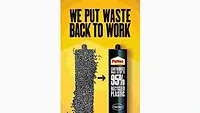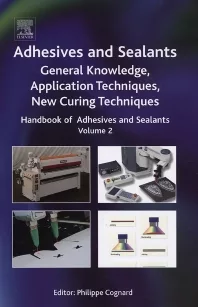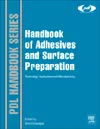A New Tool to Reduce the Carbon Footprint of Packaging Adhesives
ASI talked to Vernon Jansen van Rensburg, Head of Global Market Development for Sasol’s Wax business, to discuss SASOLWAX LC100 and how it can help adhesive manufacturers reduce their carbon footprint and reach their sustainability goals.

Petmal / iStock / Getty Images Plus
Sasol Chemicals recently expanded its product offering with the introduction of SASOLWAX LC100, an industrial wax grade with a 35% lower carbon footprint, further expanding its growing sustainable product portfolio. The latest addition is designed for use in packaging adhesives, delivering superior capabilities while achieving significant cradle-to-gate product carbon footprint (PCF) benefits.
The new SASOLWAX LC100 follows the recent introduction of SASOBIT LC, Sasol’s lower carbon solution for the asphalt industry. Both wax grades offer drop-in alternatives to the benchmark grades, enabling customers to significantly reduce their Scope 3 greenhouse gas emissions without compromising on performance.
“With a 35% reduction in carbon footprint without compromising on quality, our lower carbon product range allows customers to significantly improve their sustainability performance while meeting the highest industry standards,” said Dirk Uys, vice president sales, at Sasol. “We are committed to expanding this significant improvement in the PCF to more markets and applications, enabling customers across other industries to benefit from our sustainable solutions.”
Sasol’s model for calculating PCFs for its wax value chain has undergone a critical third-party review and complies with ISO 14040 & ISO 14044, ISO 14067, international standards that outline the requirements and guidelines for quantifying the carbon footprint of products throughout their life cycle.
In the packaging and adhesives market, where hot-melt adhesives (HMA) are prevalent, the new wax grade provides the same properties and performance benefits as Sasol's industry standard SASOLWAX H1. Among these benefits are: enabling of odorless, clear HMA formulations, especially in combination with metallocene polymers, through low viscosity, high crystallinity, and stability; allowing smoother, thinner adhesive application, resulting in more box closures with less adhesive per closure; enabling high-speed packaging lines due to fast set times; improved durability and stability; and outstanding thermal stability, boosting operational efficiency for HMA manufacturers.
ASI sat down with Vernon Jansen van Rensburg, Head of Global Market Development for Sasol’s Wax business, to discuss the new product innovation. He explained more about SASOLWAX LC100 and discussed how it can help adhesive manufacturers reduce their carbon footprint and reach their sustainability goals.
ASI: How does the new wax impact the performance of packaging adhesives in terms of adhesion, durability, and other key properties?
Jansen van Rensburg: SASOLWAX LC100 was initially designed to be a direct drop-in alternative to our industry benchmark, better known as SASOLWAX H1. When we designed this updated product, we started out with the objective to not sacrifice on performance. We wanted to make sure that the product is as durable and has all the other typical properties of the industry benchmark, SASOLWAX H1. And we're pleased to say that the result is something which is a direct one-to-one replacement that can pretty easily be introduced to the application without massive R&D interventions from our customers. The solution is now ready, and we have officially launched this into the market. And we're proud to say that SASOLWAX LC100 has a 35% reduction on carbon footprint, compared to SASOLWAX H1.
ASI: How will the introduction of this new product impact current adhesive formulations and application processes, and are there any anticipated challenges in transitioning from the old grade to the new one?
Van Rensburg: With this innovative production process, we achieve notably lower CO2 footprint. However, the product has been developed in such a way that there should be no significant challenges and has already been confirmed by our customers that in the formulation, it is a direct drop-in replacement. It has similar properties in the final application when it comes to reduction of viscosities, the open time of the adhesive, as well as set times adhesives. It has the same thermal stability and performs really, really great in water white metallocene-based adhesives. It also has all the regulatory approvals that our industry benchmark, SASOLWAX H1, has. So, it's really just a lower carbon footprint product with exactly the same benefits as SASOLWAX H1, making it pretty easy to transition.
ASI: Are you anticipating expanding the use of this new technology into other applications? Are there any plans for applications beyond packaging adhesives?
Van Rensburg: Yes. So, you might have seen in our announcement that the SASOLWAX LC100 follows hot on the heels of another industry, the asphalt industry, where we launched a SASOBIT LC, where it is providing the same benefits as the industry benchmark SASOBIT into asphalt applications, significantly reducing temperatures at which asphalt can be laid, thereby improving worker safety and exposure to fumes. We see SASOLWAX LC100 as the first step into the packaging adhesive market. We're looking at potentially broadening the product offering to a number of our other benchmark products that are used in packaging adhesives. But we also have recently launched a product known as SERATION Flex, which is utilized in the non-woven industry, enabling metallocene and APAO-based nonwoven adhesive performance, including the necessary flexibility but without the typical mineral oil additions required. And we now would like to also start to introduce these benefits of the LC concept into our non-woven market as well. And then we're looking at taking it wider than the adhesive industry into applications like Inks, Coatings and Polymer additive applications for PVC and Polyolefin processing where it reduces energy consumption and aids higher recycle content as well.
ASI: Speaking of the general industry, what future trends do you see? What are the emerging technologies that are likely to shape the sustainability landscape for raw materials, packaging adhesives, and other industries over the next decade?
Van Rensburg: I think amongst others, we're recognizing the necessity to do more with less: radical efficiency and improvements in products and production processes are needed to realize our customers' sustainability targets and for them to realize their customers' targets as well in their end use. Extending the end of life of these products is another big trend we're seeing. We ourselves have introduced some significant processes optimizations to achieve this in the first product. I think another big trend is energy sources and feedstocks, which need to be carefully considered when we or our customers operate their plants. In the early 2000s, we transitioned our wax business away from coal-as-feedstock to the FT processes and already had a significant reduction in CO2 when we made the transition to natural gas. And from there, we're continuing to build on our sustainability strategy, enabling these new next-generation feedstocks and process innovations. I think looking ahead as well, biodegradability, recyclability are some key ambitions where one needs to consider and where adhesives and paper work harmoniously to meet future sustainability goals. Adding more recycle content into the process will continue to develop the circular economy.
ASI: When you talk about your customers, one of the things that I hear people talking about is the need for more transparency. Can you talk a little bit about how collaboration between raw material suppliers, adhesives manufacturers, and the end users are driving innovation towards more sustainable packaging.
Van Rensburg: From a Sasol perspective, we have very firmly stated that we believe that success is really only going to be achieved through a collaborative effort throughout the value chain, from raw materials suppliers to converters to customers. And we firmly believe that it will have to be a collaborative effort, working seamlessly together, understanding the impact that some of our processes have on the customers’ processes, right throughout the whole product lifecycle. I think these trends are really key to developing next-generation raw materials. It's the only way that I think we will see a meaningful impact right throughout the value chain.
There is something that's also worth mentioning, which is important: to achieve this it required a big adjustment in our overall process. We introduced an alternative process which sees this big CO2 reduction. And we feel, as it is a collaborative effort, transparency is very important — being totally transparent about the information and being transparent about how we calculated the CO2 footprint. We actually employed a third party, a recognized third-party company, to verify our calculation methodologies and that our calculation methodologies are correct according to ISO standards. And in keeping with this transparency principle, transparency made the data available to our customers in our interactions with them.
ASI: What are your customers saying about how a 35% reduction in carbon footprint is impacting their sustainability targets?
Van Rensburg: If you look at an FT wax, it is added in very large percentages. In a final hot-melt adhesive formulation, you're looking at between 18% and 24% of the formulation. So, if you're bringing a raw material which has a 35% reduction, it has a meaningful impact in the overall process. But it also enables other technologies to function, you know, moving from traditional EVA-type adhesives to metallocene adhesives. Doing more with less. The FT is a big enabler there. So now bring in the 35% reduction in the CO2 footprint of the FT wax — without sacrificing on the performance — it has a meaningful impact. It has piqued the interest of a number of our customers, and we chttps://chemicals.sasol.comontinue to work with them to introduce this across the industry.
Learn more about Sasol’s products for the adhesive industry at https://chemicals.sasol.com.
Looking for a reprint of this article?
From high-res PDFs to custom plaques, order your copy today!









